
The sea cliffs of Gogarth, situated on the western tip of Anglesey are the stuff of legend. These beautiful and atmospheric crags have been a key destination for each generation of climbers since they were first discovered in the mid 60s.
Famed for its adventurous and occasionally serious climbs, Gogarth definitely suits the competent and experienced; many of the routes are tidal and loose rock is often encountered. On the main crags there is little in the lower grades, and a degree of composure is required to deal with the infamous Gogarth 'grip' factor. As a counter to all that seriousness, Holyhead Mountain, Rhoscolyn and a number of the crags spread along the north coast of Anglesey provide a less committing option. Here a more relaxed day can be had at the crag and there will be something to suit most tastes. Indeed at Benllech and Fedw Fawr there are several newly re-equipped/developed limestone sport crags with a grade spectrum largely centred on the F6a – F6c range.
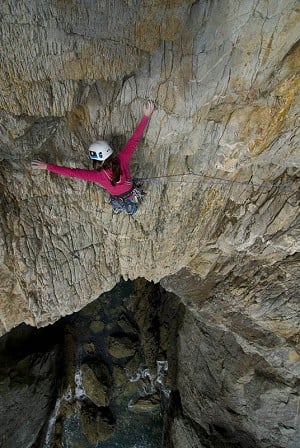
Classic Routes
Picking a list of classics at Gogarth is not an easy thing to do; such is the wealth of great climbing on these cliffs. The following is a good starting point for Gogarth virgins,
just stay a bit within your grade at first or there'll be an epic coming your way!
- King Bee Crack (HVS 5a) HVS 5a, Holyhead Mountain – Well protected, physical climbing on the sunniest crag in North Wales.
- The Ramp (HVS 5a) HVS 5a, Upper Tier – Striking feature which yields a brilliant, absorbing and tricky excursion.
- Positron (E5 6a) E5 6a/b, Main Cliff – Magnificent, historical route on perhaps the best crag in North Wales.
- Hombre (E1 5b) E1 5b, Easter Island Gully – Good honest, well protected classic on a secluded cliff.
- The Concrete Chimney (HVS 5a)HVS 5a, Wen Zawn – Outstanding; better and harder than its famous neighbour A Dream of White Horses.
- Conan the Librarian (E7 6b) E6 6b, Wen Zawn – Said by some to be the best route in Britain!
- Flytrap (E3 5c) E2 5b, Flytrap Zawn – Adventurous 'world of wonder' trip into a colourful and atmospheric sea cave.
- The Cad (E6 6a) E6 6a, North Stack Wall – The definitive bold wall climb; just make sure you're going well!
- Mousetrap (E2 5a) E2 5b, Mousetrap Zawn – Fascinating, but serious trip on the ultimate adventure crag.
- Red Wall (E2 5b) E2 5b, Red Wall – Deeply memorable experience on a mesmerising and challenging cliff.
- Rap (VS 4c) VS 4c, Castell Helen – Fine open wall climbing on the friendliest of the big sea cliffs.
- The Moon (E3 5c) E3 5c, Yellow Wall – Spectacular tip toe through wild, improbable territory.
- Tontons Macoute (E6 6a) E6 6a, Penlas Rock – Tank full of stamina? Massive rack? Get stuck in!
- The Light That Didn't Shine (XS) XS, Blacksmith Zawn – Strange and decidedly spooky adventure.
- The Sun (E3 5c) E2 5c, Rhoscolyn – Attractive line on 'mini Gogarth' cliffs.
VIDEO: Jack Geldard on Dream of White Horses and Electric Blue
Logistics
When to Go
One of the best things about the Anglesey crags is the relatively clement weather patterns which visit the island. Often when the nearby mountain crags are besieged by rain, the weather out on the coast can be surprisingly benign. Many of the cliffs (particularly at Gogarth and Rhoscolyn) are west or south facing suntraps, permitting climbing throughout the year (bird bans permitting).
How to Get There
The main crags are situated on the seaward side of Holyhead Mountain on the outskirts of Holyhead, which in turn sits at the western side of the island of Anglesey. Anglesey is dissected by the A55 dual carriageway, which allows quick access across the island to Holyhead. Holyhead is also well served by the public transport network and it is entirely possible to get within reasonable walking distance of the crags by using trains or buses.
Reaching the other crags on the island, such as Rhoscolyn or any of the north coast crags is much easier by car.
Accommodation Advertise here
No Premier Listings found in this area
Anglesey is a popular holiday destination, and as such it is well served with accommodation choices. There are a numerous campsites on the island, but a popular option with climbers has always been Outdoor Alternative at Rhoscolyn, which also has bunkhouse accommodation, as does Anglesey Outdoors in Holyhead. There is also the usual array of youth hostels, bed and breakfasts and hotels in the local towns and villages.
Another common choice is to stay in the Llanberis area on the main land and make day trips over to Gogarth if (or when) the weather craps out in the mountains. With the new A55 road you can make it across the island in roughly half an hour.
Access
The cliffs at Gogarth, Rhoscolyn and along the north coast are mostly located within areas designated as access land under the Countryside and Rights of Way Act 2000, and can be accessed along the Isle of Anglesey Coastal Path. A number of the cliffs (e.g. Mousetrap Zawn, Red Wall, Penlas Rock, Blacksmith Zawn, Smurf Zawn) are subject to a seasonal bird ban (1st Feb to 31st July) and it is vital that the bans are respected. Prior to your crag visit please check the British Mountaineering Council Regional Access Database which provides dynamic updates for all crags in the UK. Some of the climbing bans may be subject to change, for example, a temporary seasonal restriction may be applied if a rare bird is found nesting close to climbing routes.
Instructor/Guides Advertise here
No Premier Listings found in this area
Tides
On the sea cliffs the biggest threat to your safety is arguably the sea. Make sure you have a copy of the tide tables, which are available from most local climbing shops or water sport shops, or that you have consulted one of the many online tide prediction websites prior to your crag visit. It also pays to understand the changing tidal conditions. Spring Tides, which coincide with a full moon, cover the biggest range (i.e. lowest and highest tide levels) and thus have the fastest speed of water movement. Neap Tides rise and fall over a smaller range. The two tidal types switch over on a fortnightly basis, with the time of low and high tide moving on by just over half an hour each cycle. The highest tide mark is denoted by the band of black lichen at the cliff base; however a big swell and/or high winds can send waves breaking right up the crag to alarming heights.
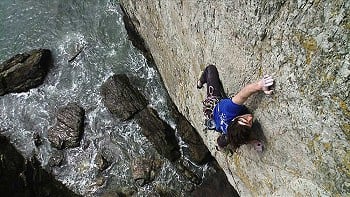
High-speed ferry wake
There is an additional safety issue which relates particularly to Main Cliff, Easter Island Gully, Wen Zawn, Flytrap Area, North Stack Wall and round to Tsunami Zawn; that being the wake generated by the high speed ferry service which runs a few times a day from Holyhead to Ireland. Outgoing ferries don't seem to cause a significant wake, but as a rule of thumb you can expect a sizeable wake from an incoming ferry to hit the crag approximately 5-10 minutes after it has passed the headland of North Stack. The impact of the wake varies a good deal depending on the tide level, sea conditions and the nature of the cliff topography. Tight zawns such as Wen Zawn are particularly vulnerable, whilst the open stretch of Main Cliff is less affected (although those traversing its base to reach their chosen route are particularly vulnerable). Another factor to consider is that the wake appears to cause a more violent disturbance to the water at low tide. Copies of the ferry timetables can be found at Irish Ferries and Stenaline . Currently you can expect an incoming high speed ferry to pass the North Stack headland at approximately 10.30, 13.15 and 19.30; however these times may be subject to change. Either way, a degree of vigilance should allow evasive action to be taken should a wake be spotted heading towards the crag.
Conditions
Sea cliffs can often be blighted by damp, slippy rock, rendering otherwise straightforward ground treacherous and strenuous. To the lay person the occurrence of the 'dreaded dampness' can seem almost mystical, however seasoned campaigners soon learn to spot the tell tale signs, such as the darker colouring of the rock. It's actually quite simple: in the morning the lower sections of most tidal routes will normally be damp. If you wait until mid day the sun and the wind will have had time to dry out the rock to a climbable state. On certain still and humid days this process can be slowed to a virtual halt and your chosen route may not come into condition at all.
Abseiling and ropework
If the approach involves an abseil, it is much safer to use an extra static abseil rope, which can be left in situ as a potential means of escape should it be required. The use of a prussic back up on the abseil rope may take a few more seconds to set up, but it could save your life in an accident situation. Most of the routes on the main Gogarth cliffs are multi pitch. Consequently it makes sense to use double ropes; these will reduce drag on big pitches and allow quick abseil retreats. You should also keep a pair of prussic loops and/or lightweight rope ascending devices clipped to your harness at all times. These will be of great use in rescue situations and will get you out of all sorts of tricky scenarios should the need arise. Indeed, it is wise to have a good working knowledge of basic rope rescue techniques, such as escaping the belay system and creating a pulley system.
Gear
Outdoor Shops Advertise here
On the majority of non-bolted routes it makes sense to use double ropes (normally 8 or 8.5mm x 50m, and dry treated); these will help to reduce drag and allow quick abseil retreats. On a big sea cliff route it is not unusual to take in excess of 15 quick draws (most of which should be extra long), half a dozen or more 120cm or 60cm slings, a double set of cams up to size 4, a full double set of wired nuts and some lightweight hexes. You will also need extra gear to set up any abseils.
There are of course many crags in the area (such as Holyhead Mountain) where a more basic rack will suffice. On the north coast sport routes a single 50m rope and 10 quickdraws will normally be enough, although it is common practice to carry some wires. You will encounter numerous ageing pegs, stuck nuts or even the odd old bolt on the Gogarth sea cliffs. These rusty relics should all be treated with suspicion, and backed up with wires, cams or slings wherever possible. The marine environment is a particularly harsh one and rapid corrosion of metals should be expected. The bolts used in the newly re-equipped limestone crags on the north coast are nearly all marine grade stainless steel (and thus resistant to degradation caused by salt water), however they should also be subject to scrutiny. Use your judgement; if a bolt looks suspect, treat it with caution.
Be aware that traversing at sea level to access your chosen route is a potentially risky business. If you slip, or are washed into the sea by a rogue wave (or the ferry wake) then it will be difficult to swim with a full rack and rope tied to you. It is much safer to carry your rack on a bandolier or sling which can be jettisoned in an emergency. Similarly, you should consider carrying your climbing rope in the traditional 'looped over the shoulder' method, allowing quick removal in the water. The more time you spend climbing in the salty sea cliff environment, the more maintenance your climbing rack will need. Rinsing your kit with fresh water (before drying it out) and lubricating all moving parts on cams and karabiners should keep everything in working order.
Clothing
The temperature on a sea cliff has an annoying tendency to fluctuate wildly from boiling hot to freezing cold, sometimes in the time it takes you to get yourself half way up your chosen route. Even on sky-blue summer days it pays to carry a spare lightweight top. Applying sun block cream to any exposed skin is also a sensible precaution during the summer months.
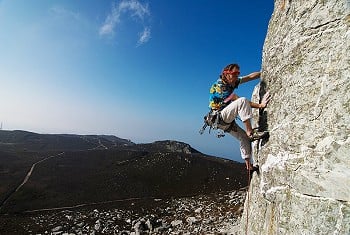
Loose rock
Loose rock is often encountered on sea cliffs; this being particularly so on the upper sections and hill side exits. Great care should be taken on loose ground; a steady, considered climbing style, where weight is carefully distributed between all limbs, is the best tactic. Try to press down rather than pull out. Finally, take care not to knock loose material off with trailing ropes, neither your second nor others climbing/traversing in the fall line will thank you for it.
Head injuries are common in climbing and abseiling accidents, so it seems sensible that all climbers, whatever grade they climb, should consider wearing a helmet, especially on the type of sea cliffs that you find at Gogarth.
Current Guidebooks:
- Gogarth North (Ground Up, 2008) – a definitive guide covering the cliffs from Holyhead Mountain and across the Gogarth Bay, and then round the North Stack promontory. It also includes a series of smaller sea cliffs dotted along the north coast of Anglesey.
- North Wales Rock (Ground Up, 2007, 2nd edition due out in 2009) – a selected guide covering all the main Gogarth and Rhoscolyn sea cliffs.
- Gogarth (Climbers' Club, 1990) - a definitive guide covering the whole of Anglesey.
- Gogarth South (Ground Up, due out in 2009) – a definitive guide covering range of crags running south from the South Stack lighthouse and around the Range to Rhoscolyn.
Gear and Supplies
The nearest dedicated climbing equipment shops are in Bangor (Great Arete) and Llanberis (V12 Outdoor, Joe Brown), but basic supplies (e.g. chalk, guidebooks etc) can be picked up from the Indy Wall in Llanfair PG.
Food shopping is well catered for too with various wholefood shops, bakeries, butcher shops and supermarkets throughout the area, plus there are numerous cafes, pubs, ice cream parlours, restaurants, and takeaway food establishments in the local towns and villages.
Other Activities
Rest day recommendations include sea level traversing (although the main traverse of Gogarth Bay is far from a easy day out and should not be attempted without wetsuits), hiring a sit on top kayak from Outdoor Alternative in Rhoscolyn, walking sections of the Anglesey Coastal Footpath, sea fishing, and boat trips out to the Skerries or around Gogarth Bay, cycling the Cefni Cycleway, bird watching, various watersports at Rhosneigr beach, or perhaps a game of golf.
Climbing Walls Advertise here
No Premier Listings found in this area
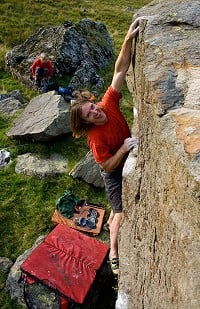
Simon Panton is a one time Yorkshire based climber, exiled to North Wales since 1996.
He is well known and liked in the Llanberis climbing scene, and is a major part of the guidebook company Ground-Up.
Perhaps best known for his bouldering exploits and articles (for Climber magazine), Simon is in fact a well-rounded climber with many trad, sport and winter ascents under his belt.
He is sometimes affectionately known as 'Ranton', as, after a bottle of red or a few beers, he can been relied upon to rant passionately at length about a variety of topics.
He lives near Cwm y Glo with his wife Clare and his cherished family – two kids and a red VW transporter.
- North Wales Rock Preview 26 Jan, 2007

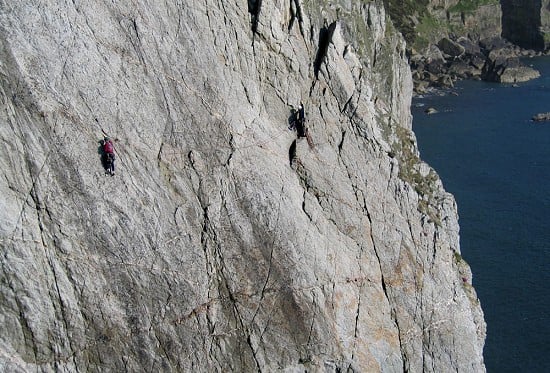
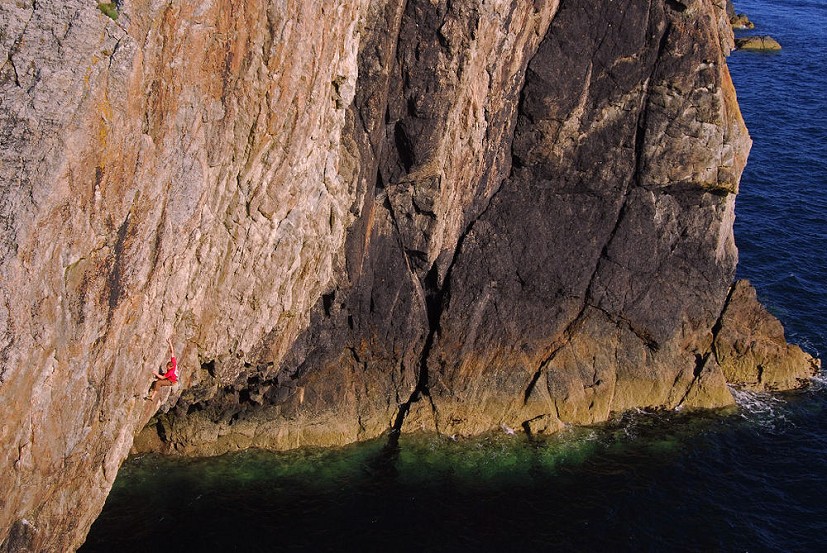
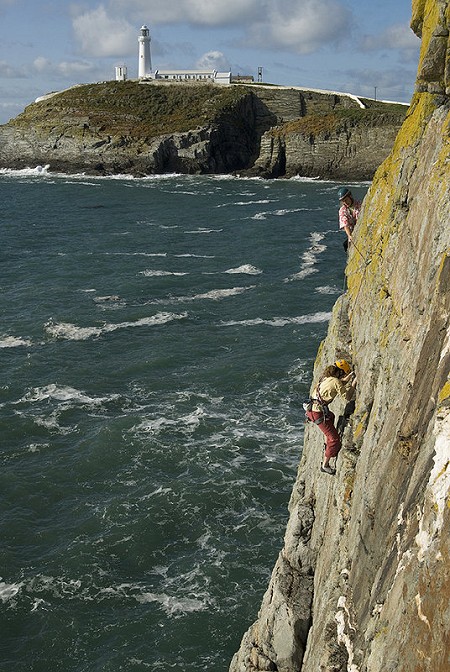

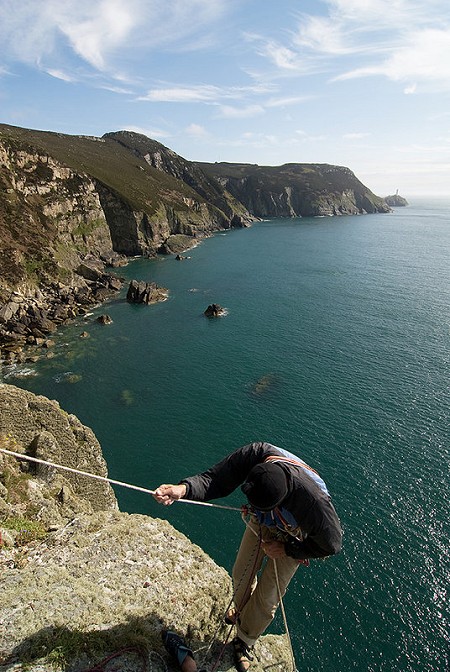
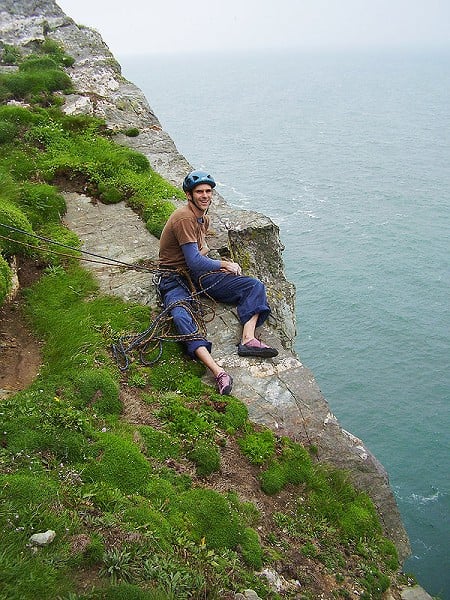
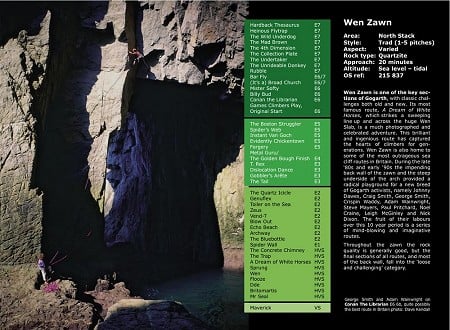
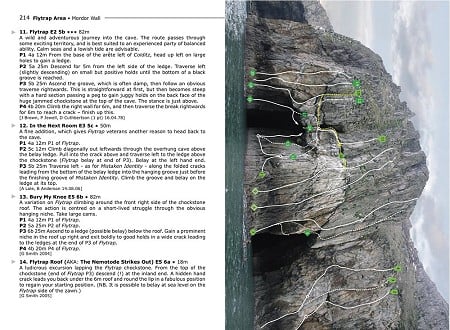
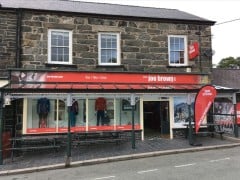




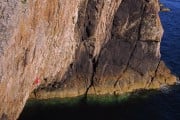



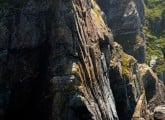



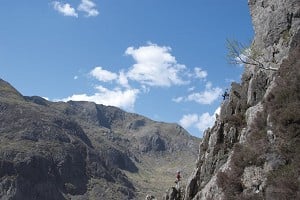

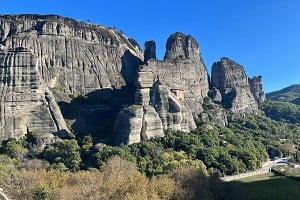
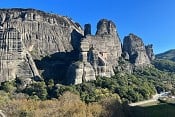



Comments